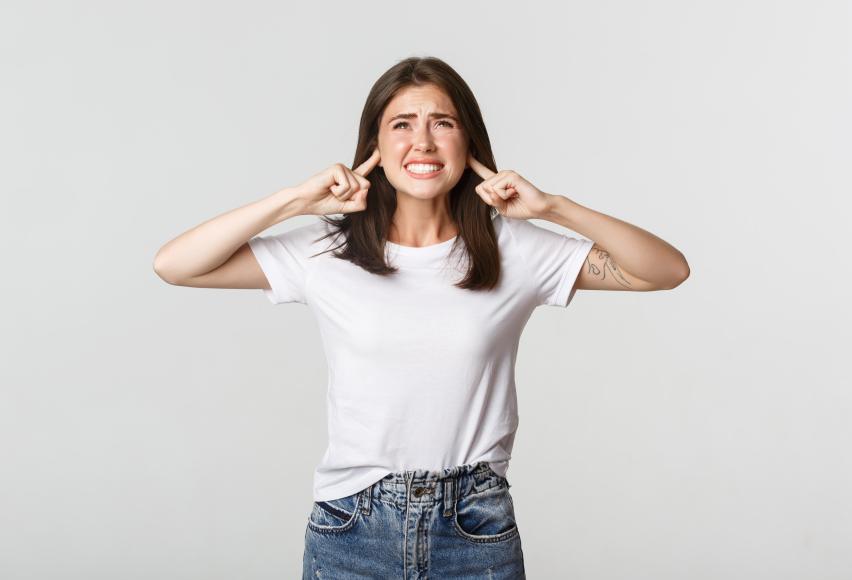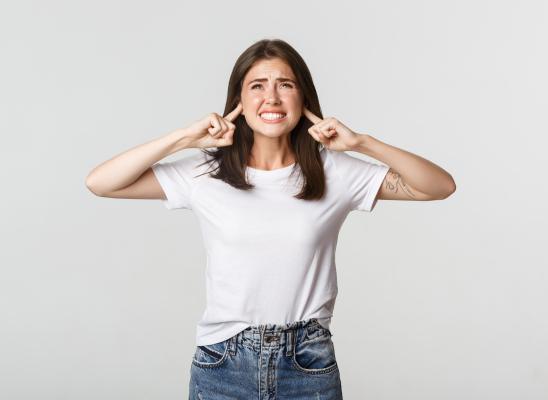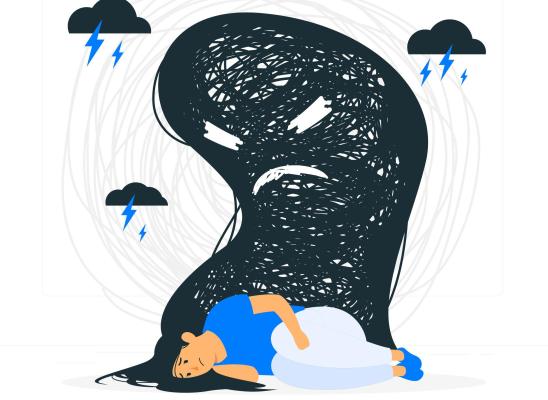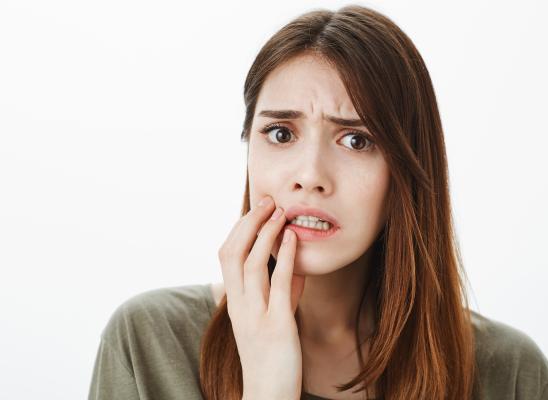Canceling The Noise: What Drives People To Pick?

Online test
Find out the severity of your symptoms with this free online test
Whether you or someone you love is living with a skin-picking disorder, the question that almost inevitably arises is “why”? What is it that drives people to pick? It’s a question that researchers have sought to understand. The answers aren’t always clear but what is clear is that skin picking is more than just the picking behavior.
Researchers have attempted to describe, categorize, and describe the behaviors and motivations related to skin picking. And they’ve learned a great deal. There’s also a lot that is still not understood. The Why. Behavior – all behavior – serves a purpose. It has meaning for the person. To fully understand any behavior, both the objective (the what) and subjective (the why) matter. What is the experience of someone who picks and how does that influence their behavior?
While past research has gathered data, there has been little qualitative research, gathering information about the experience of skin picking. A recent study seeks to understand the “why” of skin picking behavior. Seeking information from people who live with skin picking disorder, the study explores the motivations and drives that underlie the urge to pick.
Themes of Picking Behavior
Participants reported the expected types of skin picking behavior that have been previously identified: automatic, focused, and mixed. While there were individual differences in the emotional and cognitive motivations of picking, responses revealed three overarching themes.
The Voice that Permits Picking – Participants reported that their picking was driven by thoughts or circumstances that allowed or accommodated the behavior, reducing the will to stop.
Skin Texture Must Go – Thoughts and attention related to the skin, especially skin texture, motivated picking.
‘Oh Well’ and ‘So What’– This pattern of thinking revealed a resignation to picking. Picking was seen as inevitable, tolerable, excusable, or even manageable, giving permission to continue to pick.
Picking Because I Can – Picking was motivated by opportunity. The opportunity when it presents is seemingly the trigger for picking.
I Worry About People Looking and Judging Me- Much of the distress related to picking seemed mediated by beliefs about the appearance of picking and its damage as seen by others.
Shame of Picking Participants – Participants revealed feelings self-conscious of the picking and skin damage. Avoidance and concealment were commonly reported. Underlying thoughts included worry that their skin damage might be mistaken as infectious, and that picking revealed poor self-control.
I Am Misunderstood – Participants reported feeling misunderstood by others leading to distress and frustration which impacted their willingness to seek help. Feeling understood resulted in feelings of relief and validation.
Switching Everything Else Off – This theme speaks to how stress and distress are managed. Participants described experiencing periods when they would “zone out” while picking. This zoning out seems to provide relief from their emotional and cognitive “noise”.
Zoning In to Zone Out - Participants described zoning in on picking while becoming less aware of what was around them. For some this zoning out was a complete disconnect. Others described some awareness of competing thoughts (“don’t do it”) but struggled to act on them.
It Comes with Negative Emotions - Participants reported patterns in picking related to stress and distress. Trauma and general stress seemed to worsen picking. Picking seemed to occur regardless of mood.
Reducing Emotional and Mental Noise - Picking offered many participants relief from distressing thoughts and feelings. For many, picking was a means of coping or relaxation.
These overarching themes reflected the inner voice and thoughts that motivated picking, the “zoning out” that often occurs and the relief it brings, and the worries about the perceptions and judgments others may hold. They are not mutually exclusive but seem to contextually contribute to one’s picking behavior and how it is managed.
Canceling Out the Noise
The findings in the study seem to suggest that one of the roles that picking plays is an attempt to cancel out the internal “noise” that is created by emotional stress. The overarching theme of Switching Everything Else Off speaks to how the attentional experience of picking offers an escape from emotional and cognitive distress as represented in the other themes. This “zoning into zoning out” functions as a sort of emotional avoidance of those thoughts and feelings that are distressing.
This zoning out behavior has been described as being trance-like or mesmerizing such that the person becomes intently focused on picking, essentially drowning out the emotional “noise”. As the distress intensifies, the need for emotional release and the urge to pick increases. When the person is engaged in picking, time seems to stop and all focus is on picking. In this way, the “noise” is temporarily quieted as the distress is relieved without having to deal with the stressors directly. Because it’s temporary, unless the source of the distress is addressed, the cycle continues, often leaving the person with intense feelings of guilt or shame.
The theme of reducing the mental noise seems to support the idea that picking is in some ways a regulatory behavior for calming in times of overstimulation and managing traumatic experiences. This finding is similar to the stimulus regulation model of hair pulling, where hair pulling is thought to be an attempt to reduce stress and distress.
The study’s findings speak to the complexity of attention during picking. It’s more than just automatic or focused. It seems to be more nuanced than that. While it serves as a way to alleviate emotional distress, it may also weaken the resistance to future picking.
The study’s author suggests that treatment approaches should include a focus on the distress itself, both that which occurs before and after picking, as well as the experiences that trigger picking. Finding alternative ways to cope may weaken the linkage between the distress and the picking behavior. This may be especially true when there is trauma history present.
This study is one of the few that seeks to understand skin picking from the experience of the people who live with the disorder. How they describe their internal experiences reveals dynamics of the disorder than often cannot be measured quantitatively. These findings suggest that treatment planning should consider both the objective, observable symptoms as well as the subjective, internal dynamics of those seeking help.
While there are similarities in the experience of skin picking, everyone’s experience is not the same. Taking these nuances into consideration means more personalized treatment and hope for better outcomes.
References
1. The Problem with Picking: Permittance, Escape and Shame in Problematic Skin Picking (Doctoral dissertation, University of the West of England). (2021). Retrieved from https://uwe-repository.worktribe.com/preview/8675330/The%20Problem%20with%20Picking%20-%20Full%20thesis_%20with%20Appendix%206%20redacted.pdf
2. Anderson, S., & Clarke, V. (2017). Disgust, shame and the psychosocial impact of skin picking: Evidence from an online support forum. Journal of Health Psychology, 24(13), 1773-1784. https://pubmed.ncbi.nlm.nih.gov/28810443/
3. Penzel, F. (n.d.). A stimulus regulation model of trichotillomania. Retrieved from https://www.bfrb.org/component/content/article/3-treatment/102-a-stimulus-regulation-model-of-trichotillomania
4. Özten, E., Sayar, G. H., Eryılmaz, G., Kağan, G., Işık, S., & Karamustafalıoğlu, O. (2015). The relationship of psychological trauma with trichotillomania and skin picking. Neuropsychiatric Disease and Treatment, 11, 1203-1210. https://doi.org/10.2147/NDT.S79554
Online test
Find out the severity of your symptoms with this free online test
Start your journey with SkinPick
Take control of your life and find freedom from skin picking through professional therapy and evidence-based behavioral techniques.
Start Now



